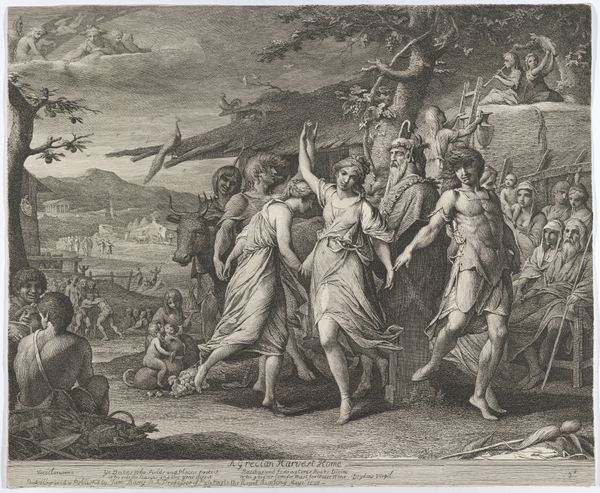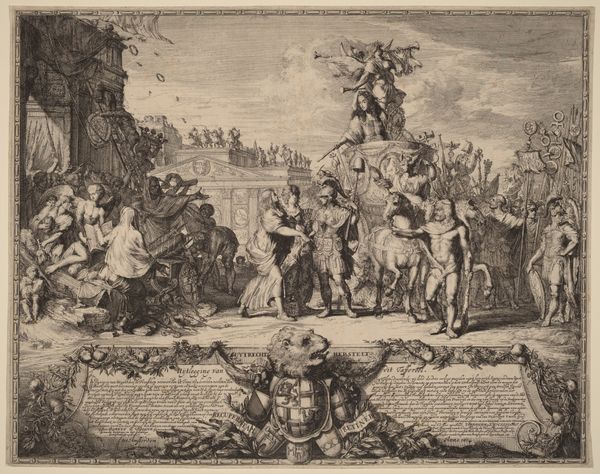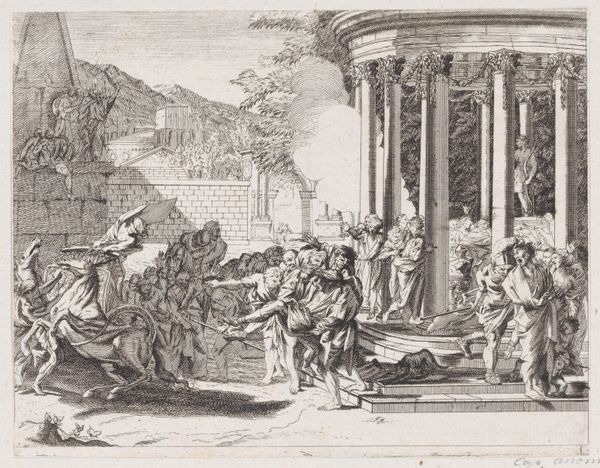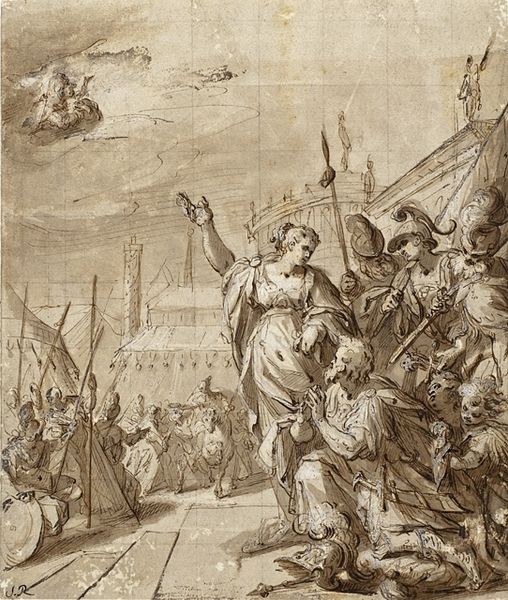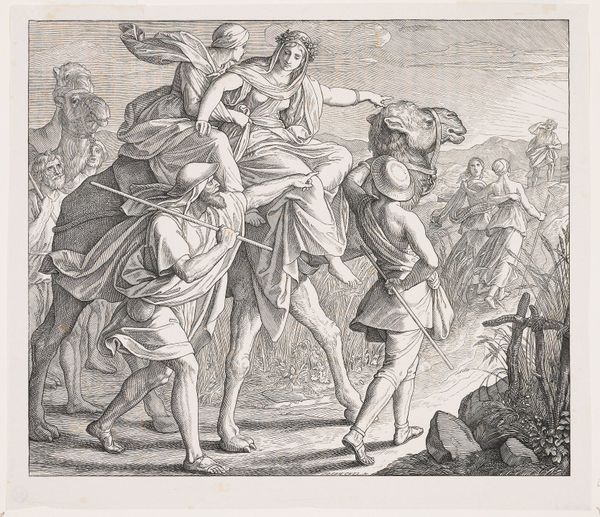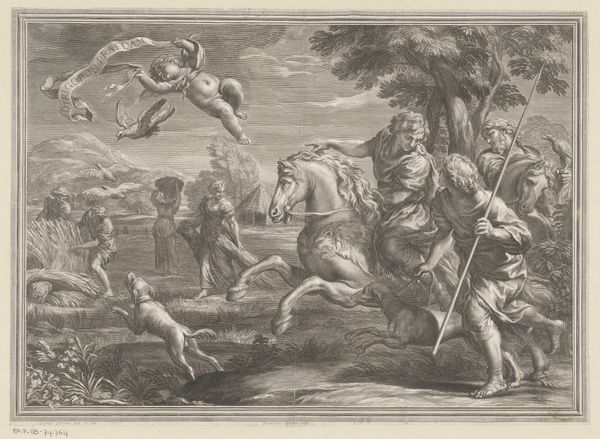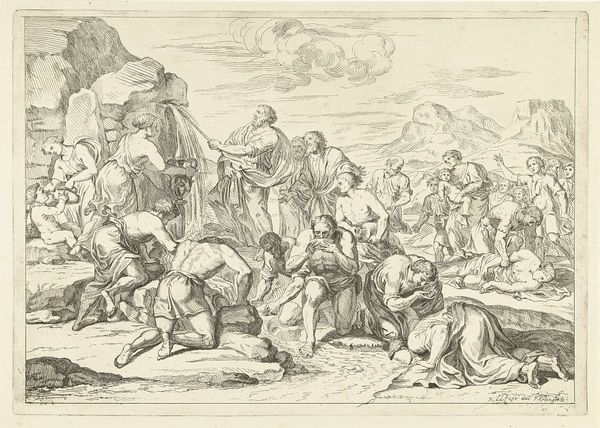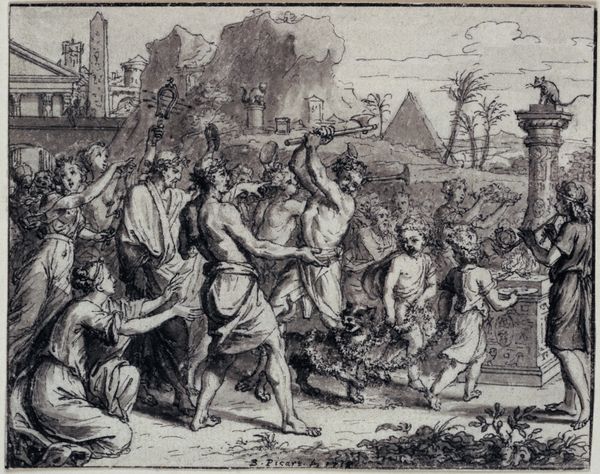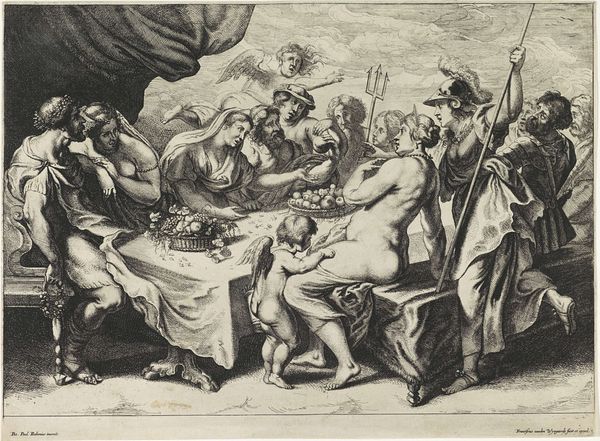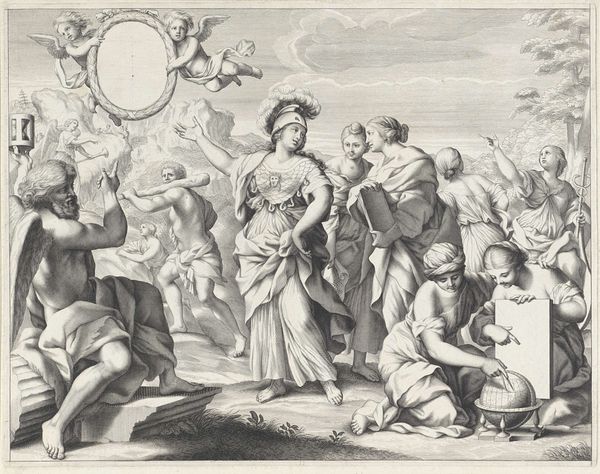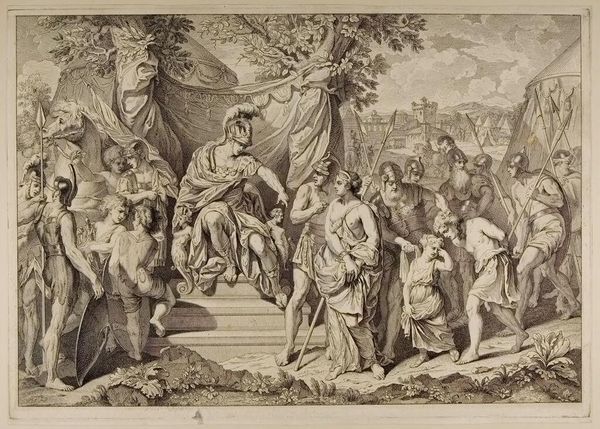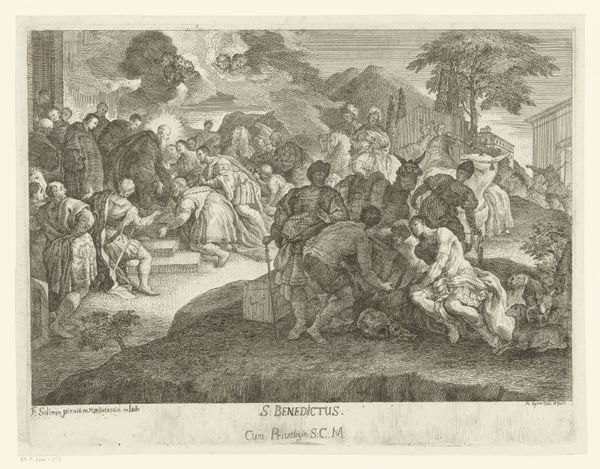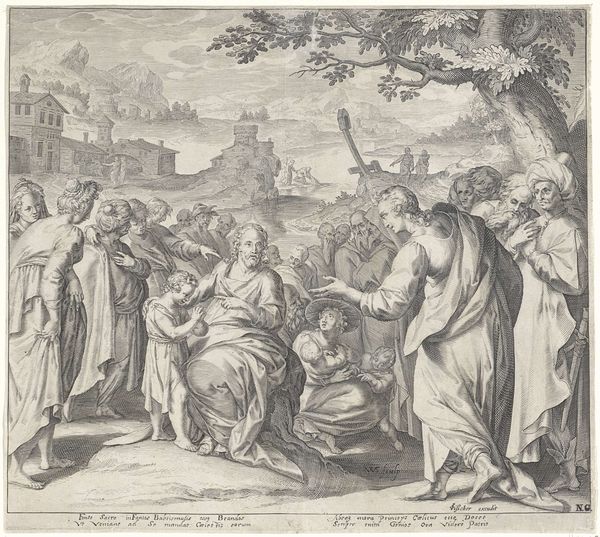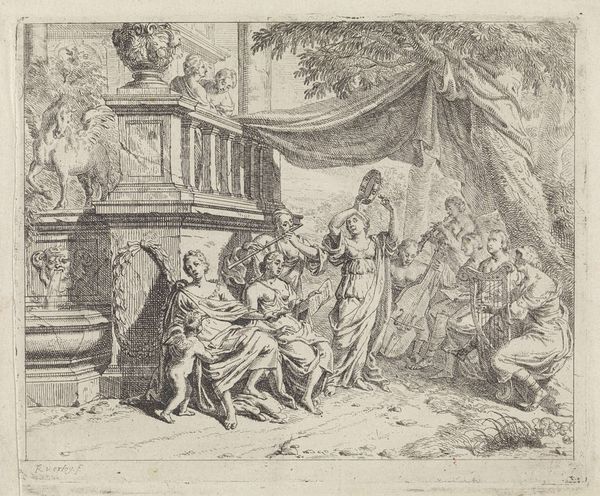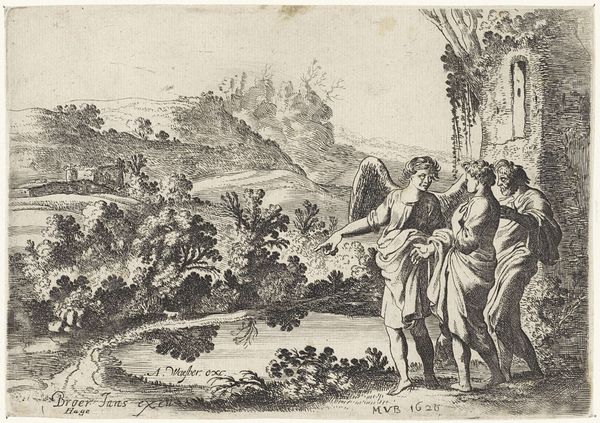
painting, oil-paint
#
baroque
#
painting
#
oil-paint
#
landscape
#
figuration
#
oil painting
#
history-painting
Dimensions: overall: 44.2 x 62.3 cm (17 3/8 x 24 1/2 in.)
Copyright: National Gallery of Art: CC0 1.0
Curator: This oil painting, attributed to Cornelis van Poelenburch from the early 1620s, depicts Christ Carrying the Cross. What strikes you first? Editor: There’s a subdued almost idyllic quality to it. It’s like a classical landscape is overshadowing what should be a moment of intense suffering and public condemnation. The historical weight of the event feels… diluted? Curator: Indeed. And that tension speaks volumes about the Baroque era's reinterpretation of religious subjects. Consider the historical backdrop – the Counter-Reformation actively sought art to reaffirm Catholic doctrines. But Poelenburch subtly infuses his personal style. He emphasizes the aesthetic qualities and landscapes rather than overt expressions of anguish. How does this blend affect your reading? Editor: It certainly softens the blow. Looking at the composition, the towering classical architecture lends this procession, this act of injustice, a sort of detached grandeur. It makes me think about how power often cloaks itself in beauty to obscure its violent origins. We are invited to gaze more at the set design than at the main subject. Curator: Exactly! And the carefully rendered landscape functions more than just as a background. By using landscape painting conventions to showcase historical or biblical narratives, it becomes a crucial visual rhetoric strategy. By portraying figures and subjects interacting within landscapes it allowed viewers to reconcile their existing perception of historical and contemporary environments. Poelenburch provides us a space where the sacred and secular blur, thus raising vital questions regarding the Church's presence during that era. Editor: That makes me wonder about contemporary representations of power and state-sanctioned violence. Is this “softening” still happening today, when the powerful and elite are staging and performativelly making acts of philanthropy, or "making amends?" Does a "softening" in images distract us from underlying injustices that have never been fully addressed? Curator: Absolutely, there is much food for thought when engaging critically with the politics of representation. Editor: Definitely. Thinking through these issues together sheds new light on the role of landscape conventions, artistic agency, and Baroque's delicate dance with Counter-Reformation sentiments. Curator: It highlights how artists then – and image-makers now – influence our perceptions and construct meaning through image-making, thus perpetuating specific ideologies.
Comments
No comments
Be the first to comment and join the conversation on the ultimate creative platform.
